The OnePlus One Review
by Joshua Ho on November 19, 2014 8:00 AM EST- Posted in
- Smartphones
- Android
- Mobile
- OnePlus
GPU Performance
As always, it's important to test the performance of the GPU in order to better understand how a device will perform in workloads such as 3D gaming and similar situations. In the case of the OnePlus One and its Snapdragon 801 SoC, we're looking at an Adreno 330 GPU clocked at 578 MHz. While this is a known quantity by this point, it's still worth going over simply to verify that performance is in line with what we expect from this setup.
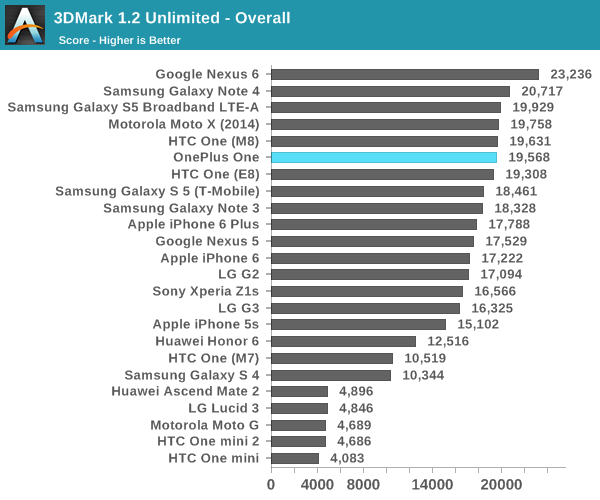
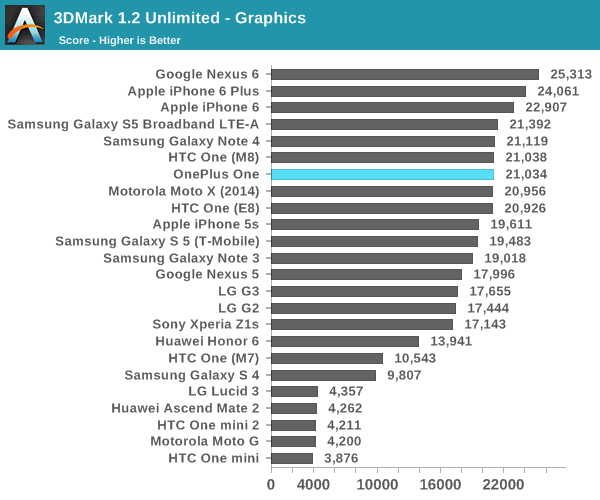
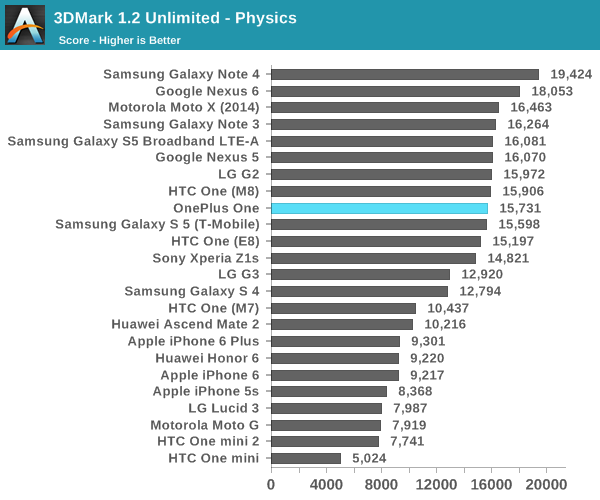
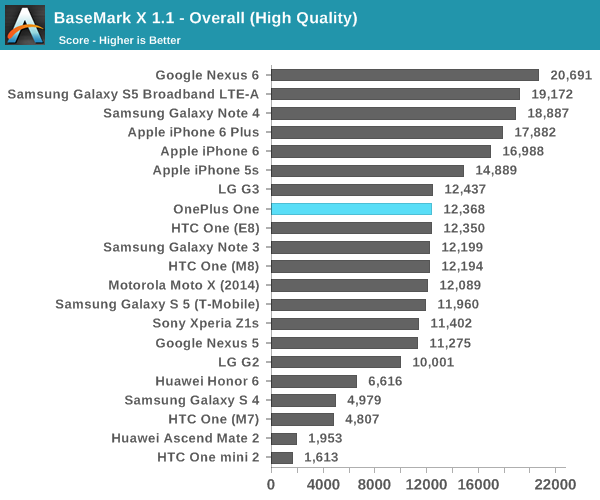
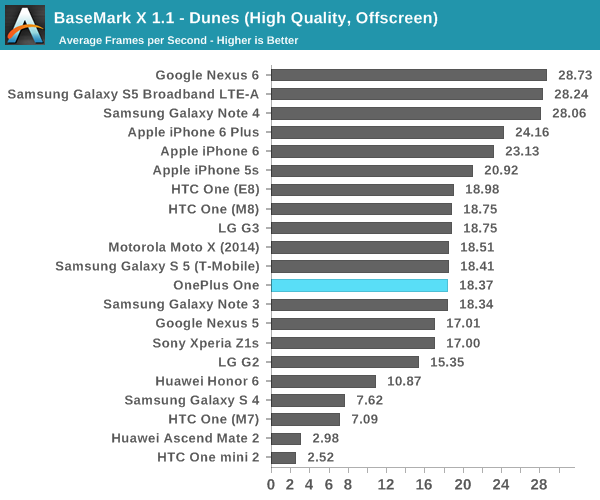
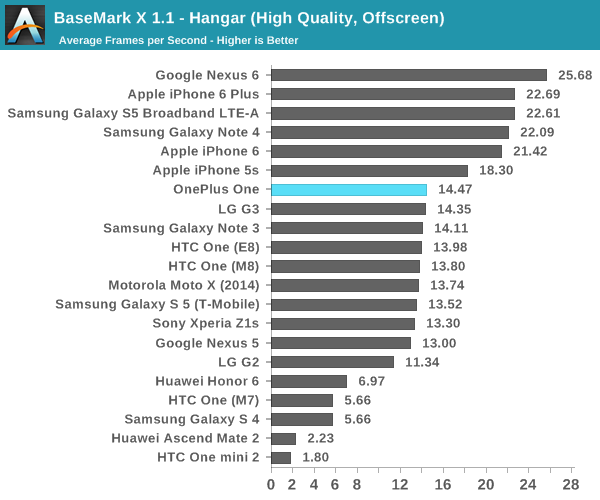
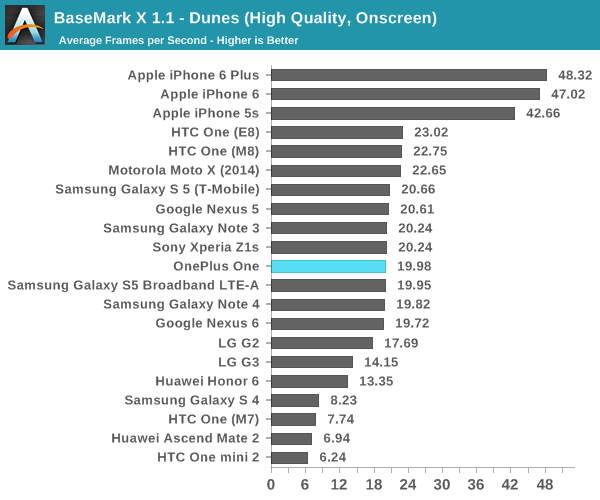
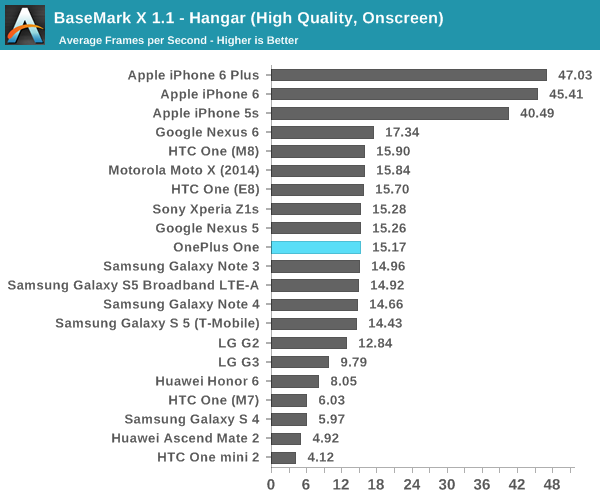
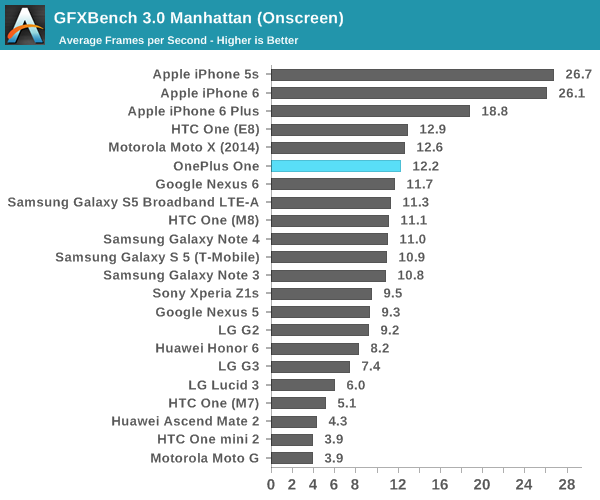

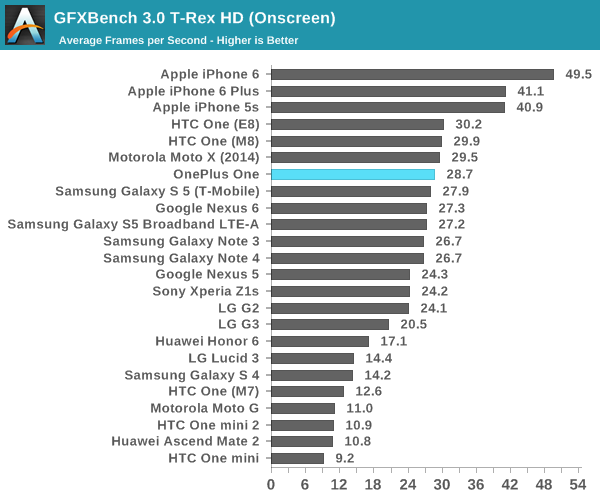
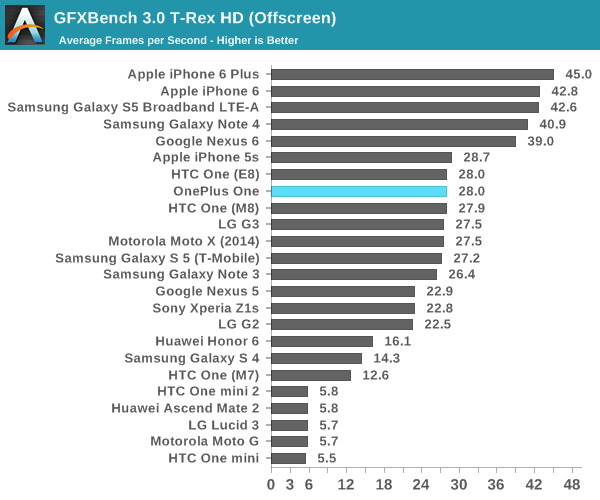
As one might be able to guess, the OnePlus One's graphics performance is where we expect it to be. At this point in the device lifecycle, the OnePlus One ends up behind the latest and greatest, but performance is more than acceptable as most of the GPU performance gains are spent on driving higher resolutions instead of better performance.
NAND Performance
In truth, storage performance tends to fall to the background on the long list of things that affect user experience. However, while it takes large improvements for a user to notice faster storage, poor storage performance is extremely obvious and painful to live with. To test this, we use Androbench with some custom settings to reduce variability in results. While Androbench seems to be an invalid test on Android 5.0, on Android 4.4 the test continues to work well for its purpose so we can disclose these results.
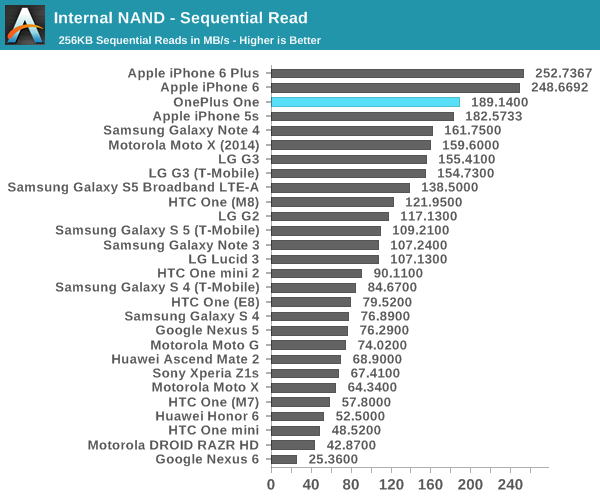
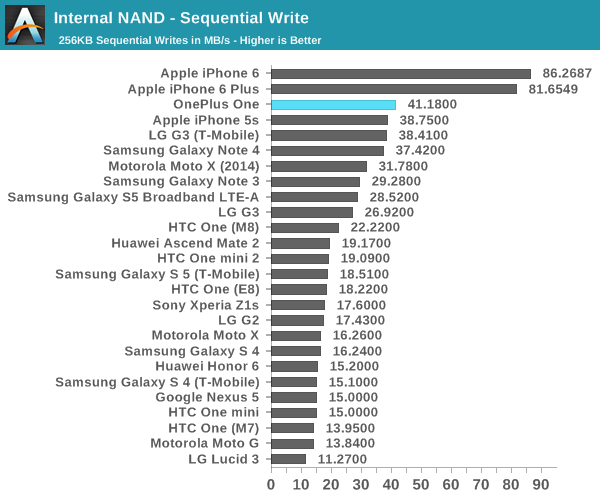
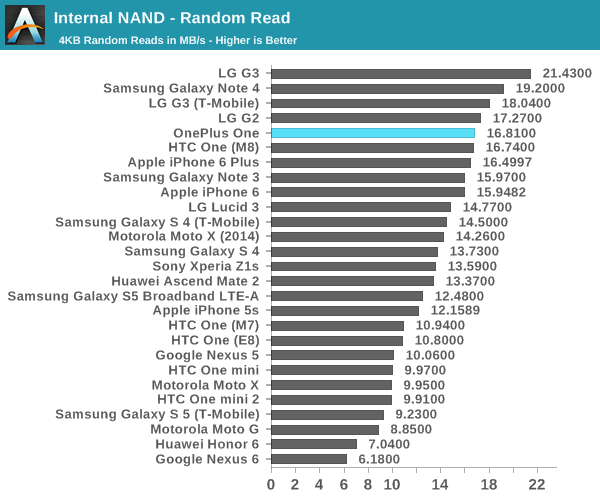
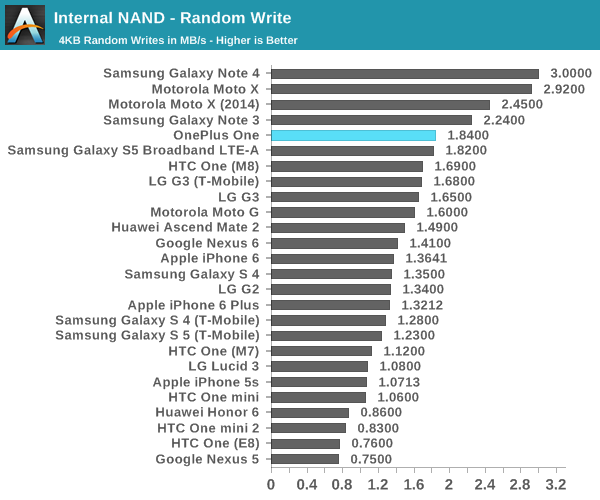
In this test, it's clear that OnePlus has kitted out the One with some extremely high-quality NAND (which appears to be a Toshiba solution) , but random I/O isn't quite as impressive. This may be due to the controller used. At any rate, one shouldn't have any problems with lag resulting from poor storage performance as the eMMC used in this device is incredibly high-end for a device of this price.










148 Comments
View All Comments
Iseek1 - Friday, November 21, 2014 - link
@Joshua Ho a lot of people are amazed / confused over the battery test results, the incredible high numbers for screen on time and battery life in general per these tests, would you possibly be able to go into more detail as to how these tests are done?dragospascu - Saturday, November 22, 2014 - link
glad that my irk with benchmarking in balance mode was addressed ; also the size "issue" :)i have it for 2 months now and can't let it rest.....my nexus 7 is full of dust :)
i just hope they'll manage to ramp up production so all other manufacturers will be forced to reconsider their profit margins. i think everybody should cheer them up :)
shainawilliams1992 - Saturday, November 22, 2014 - link
OnePlus One is now on sale only at http://tinyurl.com/mrq34ostheduckofdeath - Saturday, November 22, 2014 - link
" While contrast with viewing angle changes isn't as good as AMOLED panels, I don't see any color shifting with viewing angle changes. This seems to remain an advantage of IPS panels for now."You know you're reading a review on iAnandtech when the writers tries to find every little scrap to be able to pretend LCD is on par with AMOLED in 2014.
Socius - Saturday, November 22, 2014 - link
IPS displays are actually superior to amoled with the exception of black levels and contrast...theduckofdeath - Thursday, November 27, 2014 - link
The extreme difference in dynamic range (by a factor of 1000 to 1) makes the theoretical minute differences in "colour accuracy" that Anandtech WRONGLY finds in their comparisons, completely irrelevant.Anandtech's flawed tests has often been openly criticized by professional display testers as being inaccurate. For instance by Displaymate, which all manufacturers use to test and calibrate their displays.
AnnonymousCoward - Saturday, November 22, 2014 - link
The color white is still better on LCD than OLED. And OLED phosphors age.theduckofdeath - Thursday, November 27, 2014 - link
I have never, ever had any issues with aging of AMOLED displays. I really think you need to update your sources. The absolute first generation of OLED had aging issues. That was 6-7 years ago.LCD displays age and bleach, too. My old laptop (which is around 4 years) with an LCD has issues showing the difference in low contrast areas, which is a big problem with all these modern/material themed sites and apps these days.
AnnonymousCoward - Friday, November 28, 2014 - link
> you need to update your sourcesMy source is myself! My 2.5 year old Samsung phone has faint spots all over that are marginally visible when the whole screen is a dark color.
pliablemoosethebanned - Saturday, November 22, 2014 - link
I've had a couple of OPO's, and thought they were a great phone, particularly when you factor in the price.